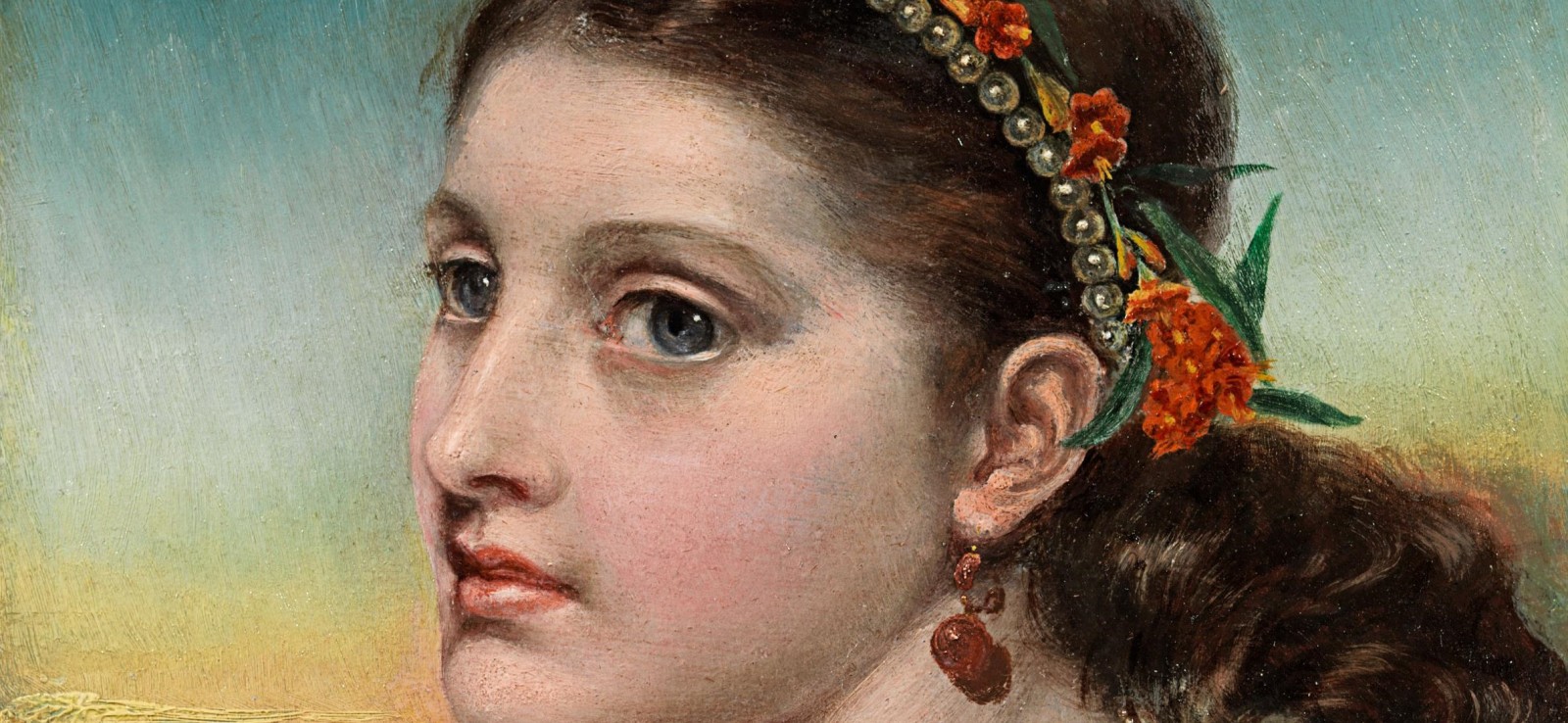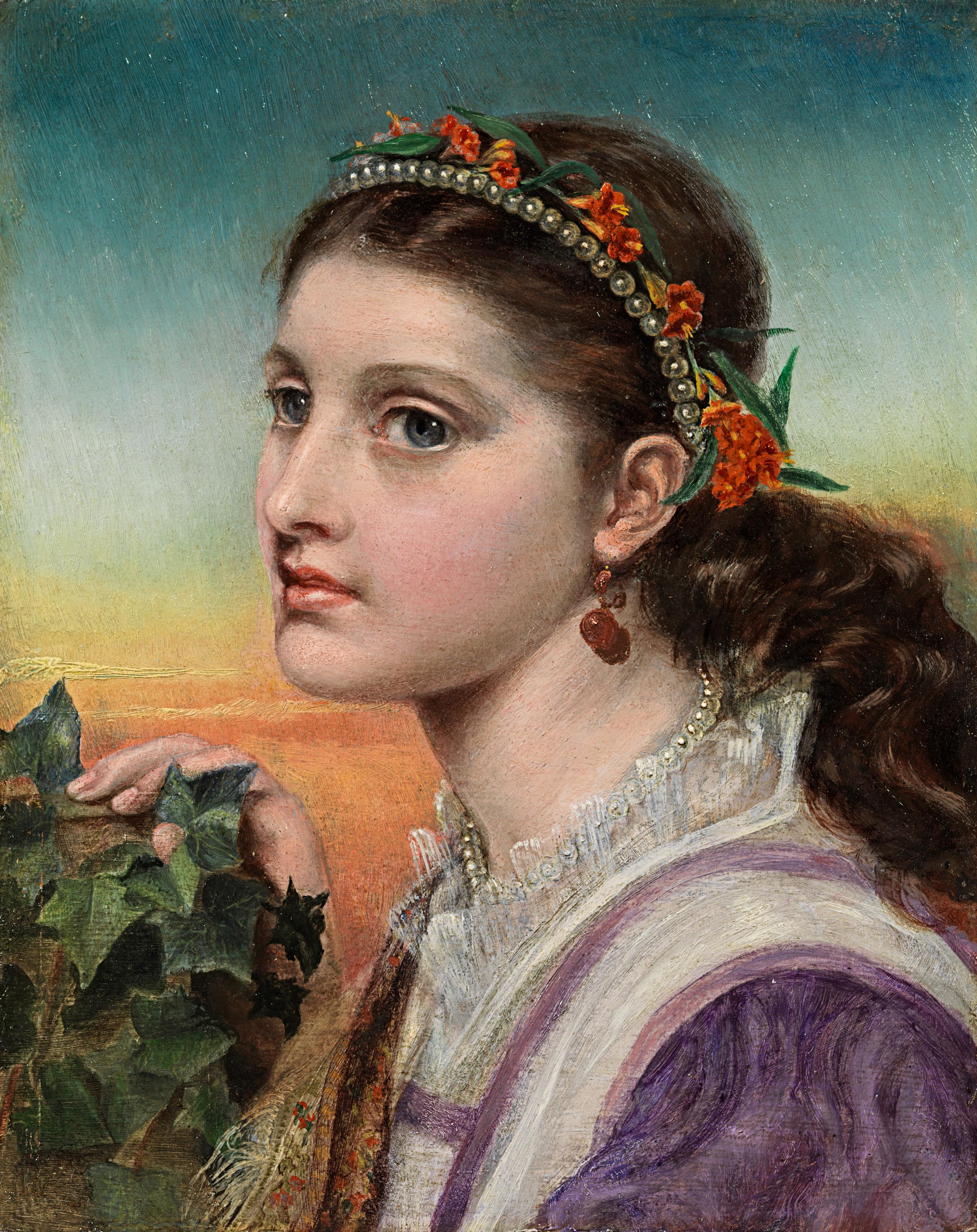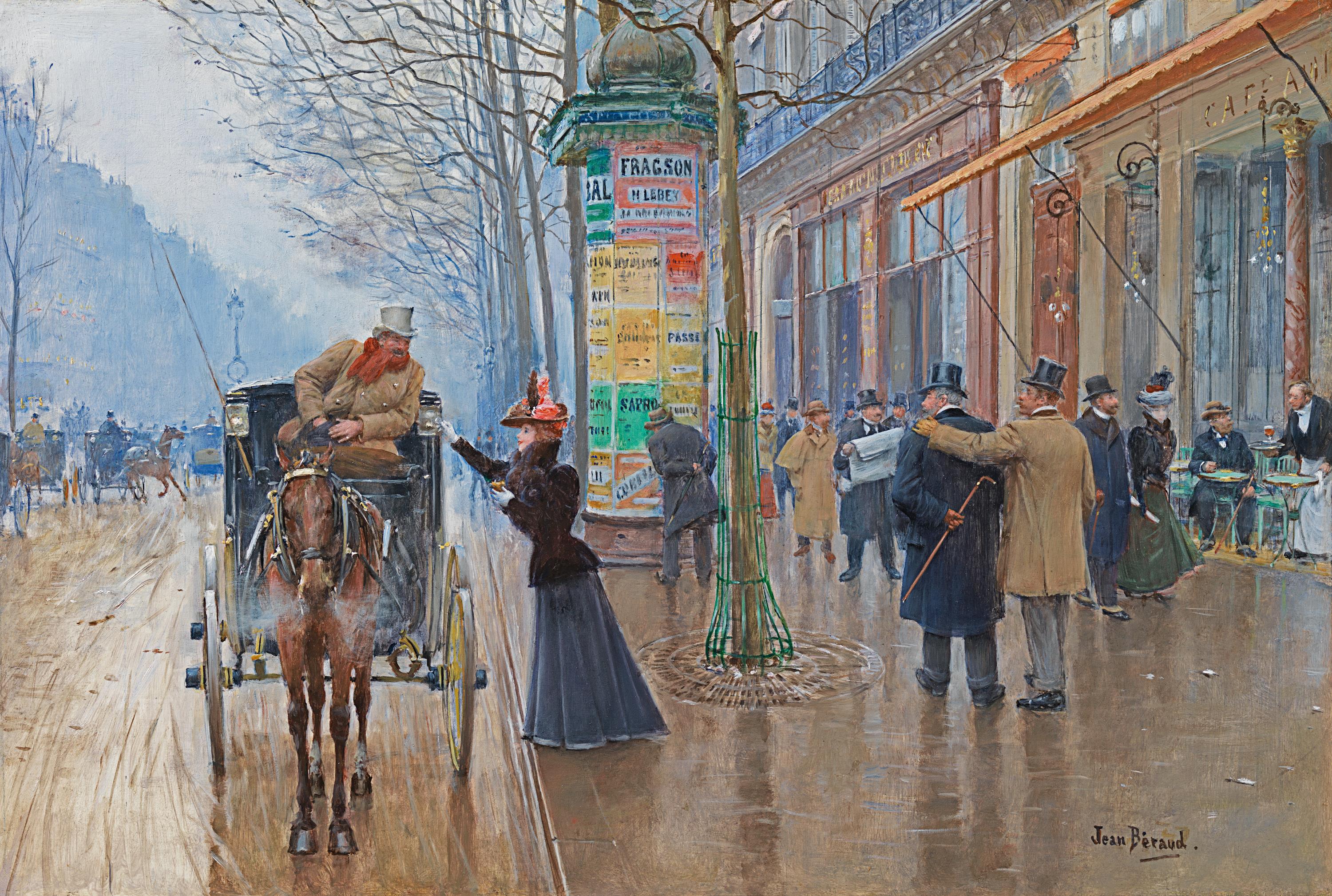
Richard Green is proud to have assisted in the formation and development of museums and public collections worldwide over the past seven decades.

Fidelity by Emma Sandys sold to the Art Gallery of South Australia
Fidelity, painted circa 1870, by Emma Sandys (1841-1877) depicts a beautiful girl with blue eyes and undulating, auburn hair. Her violet and white dress is accessorised with a paisley shawl and string of pearls, which also adorn her hair as well as a garland of orange red flowers, whose hue is picked up in her earrings, enriching her appearance and hinting at an allegorical, literary or historical identity. The colours are rich and autumnal, echoing the dramatic sunset beyond. The presence of ivy at bottom left has led to the title Fidelity. The striking garland of Campsis radicans or Trumpet vine, in the girl’s hair, would seem to support this, perhaps symbolising waiting.
The bust-length female figure was Sandys’ foremost subject, not only because it was a favoured motif in the 1850s and 1860s, but also because of the artist’s training with her father, Anthony, and then, most likely, her celebrated brother, Frederick Sandys (1829-1904). Dr Pamela Gerrish Nunn suggests the figure depicted may be a Norwich neighbour called Marianne Shingles (1855-1933), identified by Sandys scholar Betty Elzea. Marianne can be seen in Fred Sandys’ La belle jaune Giroflée of 1869.
test
Emma was associated with the Pre-Raphaelites through her brother Frederick, with whom she occasionally stayed in London and letters from Dante Gabriel Rossetti (1821-1893), suggest he knew her and introduced her to potential patrons. Emma occasionally modelled for her brother and it is likely that the siblings shared models (such as Frederick’s daughter Mildred and common-law wife, Mary Emma Jones), as well as patrons, their similar styles and compositions having led to her work being mistakenly attributed to him in the past.

LACMA buys Jean Béraud’s Scène de rue parisienne: le boulevard des Capucines, 1897-98
With all eyes on the Paris Olympics, opening on 26th July, it is appropriate that the Los Angeles County Museum of Art (LACMA) has acquired from Richard Green its first work by Jean Béraud, a painter with his pulse on Paris at the turn of the twentieth century, substantially the Paris that we know today. A friend and schoolmate of Marcel Proust, Béraud moved effortlessly among the intellectual and social salons, theatre crowds and teeming boulevards of Baron Haussmann’s dazzling modern city. His paintings are so au courant that they can often be dated with reference to the playbills that adorn the colonnes Morris advertising pillars. The one at the centre of Scène de rue Parisienne colourfully trumpets the music hall star Harry Fragson and the melodrama Le Passé, dating the painting to the winter of 1897-98.
Dr Leah Lehmbeck, Curator of European Paintings and Sculpture, explains the thinking behind the acquisition: ‘Besides the exquisite draughtsmanship, and the general moment that Béraud captured, the Boulevard des Capucines itself held particular significance for those who study radical changes in visual culture: it was the street that housed the groundbreaking First Impressionist Exhibition, and the street that hosted the first public showing of the new medium of cinema, in 1896. It situates Béraud in a context adjacent to, but much wider than Impressionism and avant-garde painting, placing him in a kind of new-media world that was developing in Paris in the final quarter of the nineteenth century.
‘The image is what we recognize as present-day Paris: a politically subdued, consumer-friendly playground for the local and global bourgeoisie, and it provided the circumstances for our protagonist: the well-dressed woman at centre who pays her cab driver while being watched by two male passers-by. They don’t leer, but suggest in their joint gazes that her independence is not yet a typical sight on the boulevard. Indeed, until this moment, representations of middle and upper class women alone were essentially relegated to studio portraits and domestic interiors, and this painting would therefore be the earliest depiction of an independent woman in a public, urban environment to enter our collection. Appropriately, she is presented on a street that hosted innovative displays of visual culture, in the broader context of a newly updated city that served as a model for the world. Béraud captures what is to come, a way of being for the individual, the street, and the city that set the tone for the century to follow’.
Béraud’s painting will go on view at LACMA in 2026 as part of its redisplay following a $750 million rebuilding project.
@lacma
Share